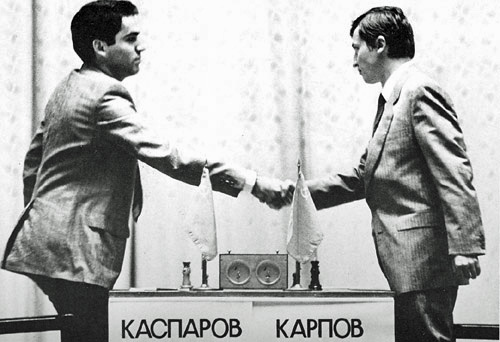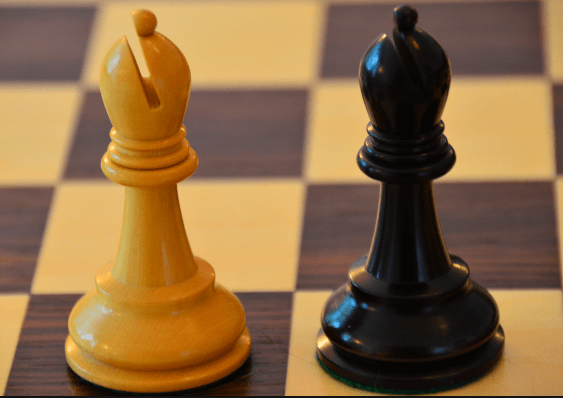10th world chess champion Boris Spassky was on record for saying he and his first wife Larissa “were like bishops of opposite color.” Indeed, opposite bishops in chess act as if they live in parallel universes- neither one intrinsically better than the other, they follow similar movements only to never actually meet or share a common long term goal (Boris would marry three times, and unfortunately ended all three in divorce).

(Photo by Harry Benson. Courtesy LIFE Magazine, Time Inc.)
Ok enough of the sappy stuff.
The mark of a good chess player has always been the ability to churn out winning ideas from a level playing field-given a similar amount of resources and time. How then, does one take the imbalance of opposite bishops and turn that into a winning advantage? After all, a light squared bishop can never hope to contest the same squares as its dark squared counterpart, and vice-versa. Do they invariably cancel out?
Let’s take a look at three instances where such a situation arises, first from Aaron Nimzowitsch vs Jose Raul Capablanca:
Second, let’s look at a game from the Magician of Riga-Mikhail Tal- and Ivan Radulov, in a pure bishop of opposite color face off:
Now for the third, and what I consider the apex, example. The following game is between two absolute legends: Anatoly Yevgenyevich Karpov (white) and Garry Kimovich Kasparov (black) during their titanic 1985 world championship match. In a clash of opposing styles (Kasparov is known for his tactical prowess and opening preparation with flashy attacks and sacrifices. Karpov is known for his positional grinding and exploiting small wrinkles in the position with minimal risk.), what better way to end on the topic of opposite bishops? It’s one of my personal favorite games and is appropriately dubbed: The White Key Symphony.

Absolute masterclass by Karpov! Despite this brilliant game, Garry would continue on to win a thrilling 24 game match which was a nail biter till the very end (for those interested, I would recommend The World Chess Championship, Karpov-Kasparov: Moscow 85 by Y. and Mark Taimanov Averbakh).
So what can be gleamed from this? In general terms, it’s fair to assess the following:
- Opposite colored bishops favor the attacking side, since the defender essentially has one less piece to participate on key squares.
- Use the uncontested color complex to induce positional weaknesses in a slow, gradual manner.
- Keep heavy pieces on to maximize winning chances. Avoid trades/simplification until a tangible advantage is present.
I intend to continue this “series” with topics intended to broaden chess knowledge, cherry-picking ideas from chess lore and history. See you in the next one!


Laura Nyström
Amazing. Really enjoyed going through these games. Thank you for this!